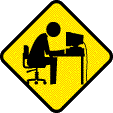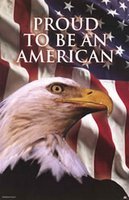Tuesday, August 29, 2006
Hey, hey, it's Tuesday! And I have my car back! Thank you Jesus...No more rides with my DH. I do love the man, but his driving leaves much to be desired! Ladies...You all know what I mean!
Well we only have a few lessons left in this book, so let's get at it!
Today we continue with Donald Maass' Writing a Breakout Novel. This is a fabulous book and I encourage each of you to buy it. What I'm presenting here is by no means a full lesson and there is a wealth of insight and additional info that will help you.
In case your just joining us...What I am attempting to do here is present truncated versions of each of the lessons in the workbook. We're done with Plot Development, now we're moving on to General Story Techniques! Today's lesson is in Section THREE: Symbols.
Symbols, which sometimes go by their more academic name, objective correlative, are another literary device that feels old-fashioned. The very word takes you back to high school!
In their simplest form, though, symbols are anything outward that stands in for anything inward, or abstract, such as a mood or an idea. A statement like, "He was in turmoil" can feel blunt. Instead, we might substitute an image; say, "Outside, the Siberian Elms held their heads in their hands and swayed, wailing like a chorus of Greek women." Okay so it's over the top, but it nevertheless conveys an inner state.
Symbols can be glaringly obvious, of course. Think sunsets and trains rushing into tunnels. At their best, though, they are elegant and evocative. Their effect can be subliminal, barely noticed. A device they may be, but they also can be quite powerful.
Are there physical objects or recurring events that might serve as symbols in your novel? The exercise that follows asks you not to impose symbols on your manuscript, but to discover them already there. They are buried like artifacts that readers can happen upon and enjoy, either consciously or not, for the extra meaning that they add to your story.
Step 1: What is one prominent object, event, or action that appears in your novel?
Step 2: How can that object, event, or action recur at your novel's end?
Step 3: Find three other places where this object, event, or action can recur in the course of the story.
Note: Whether it is a gathering hurricane or a pink ribbon from a child hood Christmas package, symbols gain power as they recur. Naturally a hurricane forming in every scene would be a ridiculous run of bad weather, but as the opening and closing framework to a story? That could work.
Same thing with rings, ribbons, whooping cranes, green Packard convertible...Any natural or inanimate object that returns at portentous moments. Such objects soak up meaning and then release it.
Follow-up: What is the opposite of that object, event, or action? Find a place for that to appear or occur too.
Conclusion: Sometimes called objective correlatives, symbols can be overly obvious, but when cleverly chosen and tactically deployed they can punctuate a story in powerful ways!
And the end of the Wisdom and Questions:
1. Isn't it a bit unnerving that doctors call what they do "practice"?
2. Where do forest rangers go "to get away from it all?"
3. What do you do when you see an endangered animal eating an endangered plant?
4. If a parsley farmer is sued, can they garnish his wages?
5. Would a fly without wings be called a walk?
6. Why do they lock gas stations bathrooms? Are they afraid someone will clean them?
7. If a turtle doesn't have a shell, is he homeless or naked?
8. Why don't sheep shrink when it rains?
9. Can vegetarians eat animal crackers?
10. If the police arrest a mime, do they tell him he has the right to remain silent?
11. Why do they put Braille on the drive-through bank machines?



























Congrats on getting the car back. Did you give poor DH any dents in the back of his head? I have a few.
So that's two experts who advise digging them out and subtly brushing the dirt off.
Those I have, hope they are not too obvious.
My kids always called a walking fly a "walk."
A hoot to see it here.